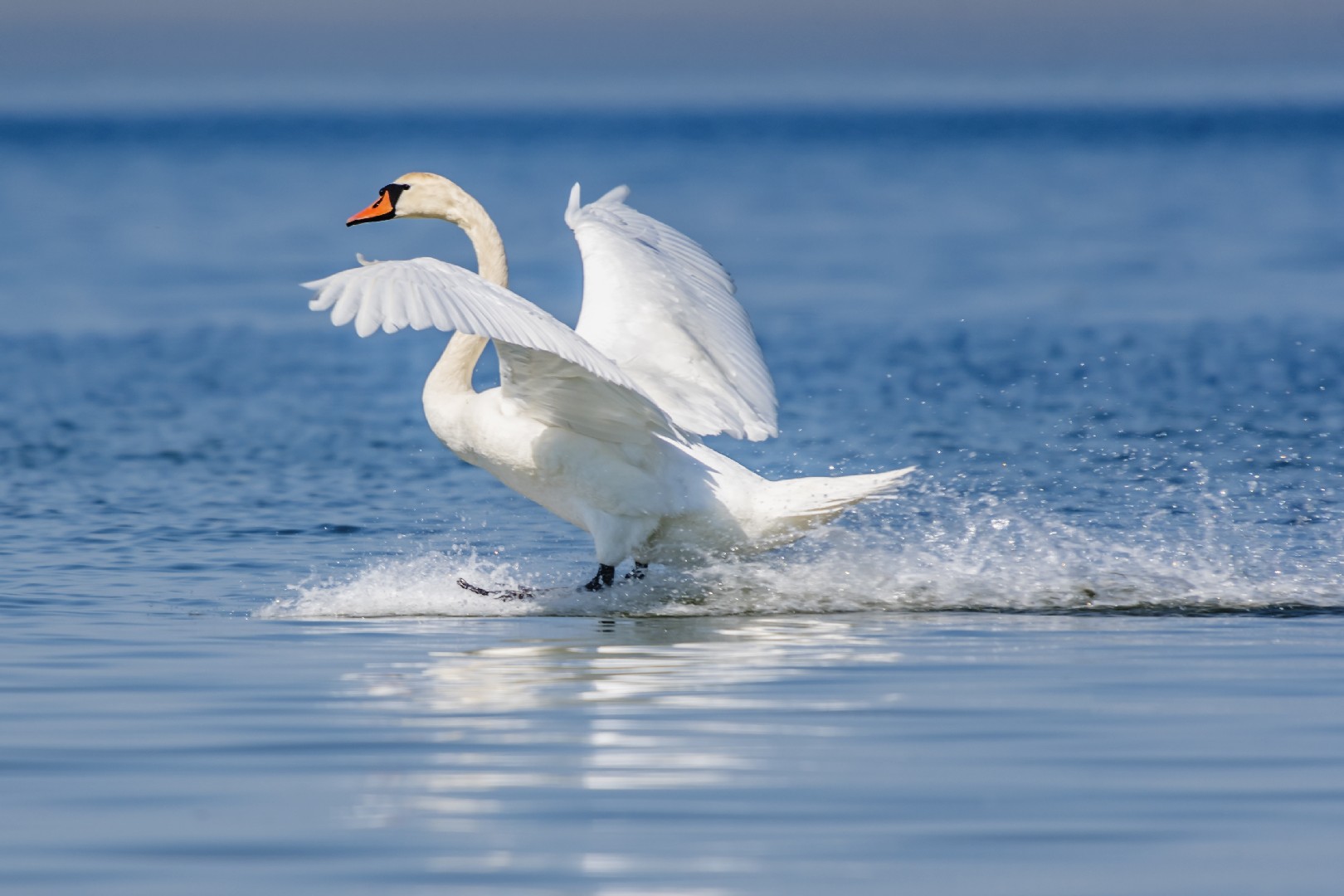Mute Swan
A species of True Swans Scientific name : Cygnus olor Genus : True Swans
Mute Swan, A species of True Swans
Botanical name: Cygnus olor
Genus: True Swans
Content
Description People often ask General Info
 Photo By Aleksandr Abrosimov , used under CC-BY-SA-4.0 /Cropped and compressed from original
Photo By Aleksandr Abrosimov , used under CC-BY-SA-4.0 /Cropped and compressed from original Description
The most common inhabitant of urban lakes and one of the heaviest of all flying birds, the mute Swan got its name by being less noisy than other swan species. Although stunningly beautiful and graceful, it is also quite aggressive and territorial. The national bird of Denmark, the mute Swan is famously portrayed in Hans Christian Andersen's fairytale "Ugly Duckling" and Tchaikovsky's ballet "Swan Lake".
Size
1.4 - 1.6 m
Life Expectancy
19-40 years
Nest Placement
Ground
Clutch Size
2 - 5 eggs
Number of Broods
34 - 41 days
Feeding Habits
Mute Swan primarily consume aquatic vegetation and occasionally small aquatic animals like frogs, tadpoles, fish, mollusks, and insects. Foraging behaviors adjust seasonally, with increased animal intake during molting and vegetation scarcity. Daily, mute Swan can ingest up to 8 pounds of plants, using their robust bills to rip and rake submerged and surface vegetation. Human-provided foods, such as grains and produce, supplement their diet.
Habitat
Mute Swan thrive in tranquil aquatic settings, often favoring lower altitudes and moderate climates. They are adaptable, residing in a variety of wetlands such as freshwater lakes, ponds, slow rivers, and estuaries, exhibiting a preference for areas dense in emergent vegetation. Additionally, they can inhabit brackish and saltwater environments when nesting. To access food, mute Swan migrate to ice-free waters during severe winters.
Nest Behavior
Mute Swan's nesting season sees the male initiating construction, followed by the female shaping the nest, which has a 10-day building period. Egg-laying and brooding sometimes involve additional nest fortification, and both parents partake in rearing the young.
Nest Characteristics
The nest of mute Swan is often located on a small peninsula, vegetated shoreline, or island, safe from flooding with access to water. Made by both sexes, it's a large mound up to 5 feet wide and 1.5-2.1 feet tall, made from twigs, reeds, and grasses, with a cup measuring 15 inches across.
Dite type
Herbivorous
People often ask
General Info
Feeding Habits
Bird food type
Sounds
Call
Recording location: Netherlands
Call
Recording location: Netherlands
Behavior
Mute Swan exhibit a range of behaviors unique to their species. Spending much of their day on water, they are skilled in taking off and landing, even using running starts on land due to their short legs and awkward gait. On water, mute Swan may elegantly 'sail' with wings aloft. They are known for strong pair bonds, often monogamous and fiercely defensive of their territory, performing water-slapping and 'busking' displays to intimidate intruders. These birds are notably aggressive, not shying away from combat to subdue rivals or driving away other species, such aggression and their feeding habits can lead to conflicts with wildlife management due to habitat degradation and displacement of native fauna.
Distribution Area
The mute swan is found naturally mainly in temperate areas of Europe then across the Palearctic as far east as Primorsky Krai, near Sidemi. It is partially migratory throughout northern latitudes in Europe and Asia, as far south as north Africa and the Mediterranean. It is known and recorded to have nested in Iceland and is a vagrant to that area, as well as to Bermuda, according to the UN Environment Programme chart of international status chart of bird species, which places it in 70 countries, breeding in 49 countries, and vagrant in 16 countries. 